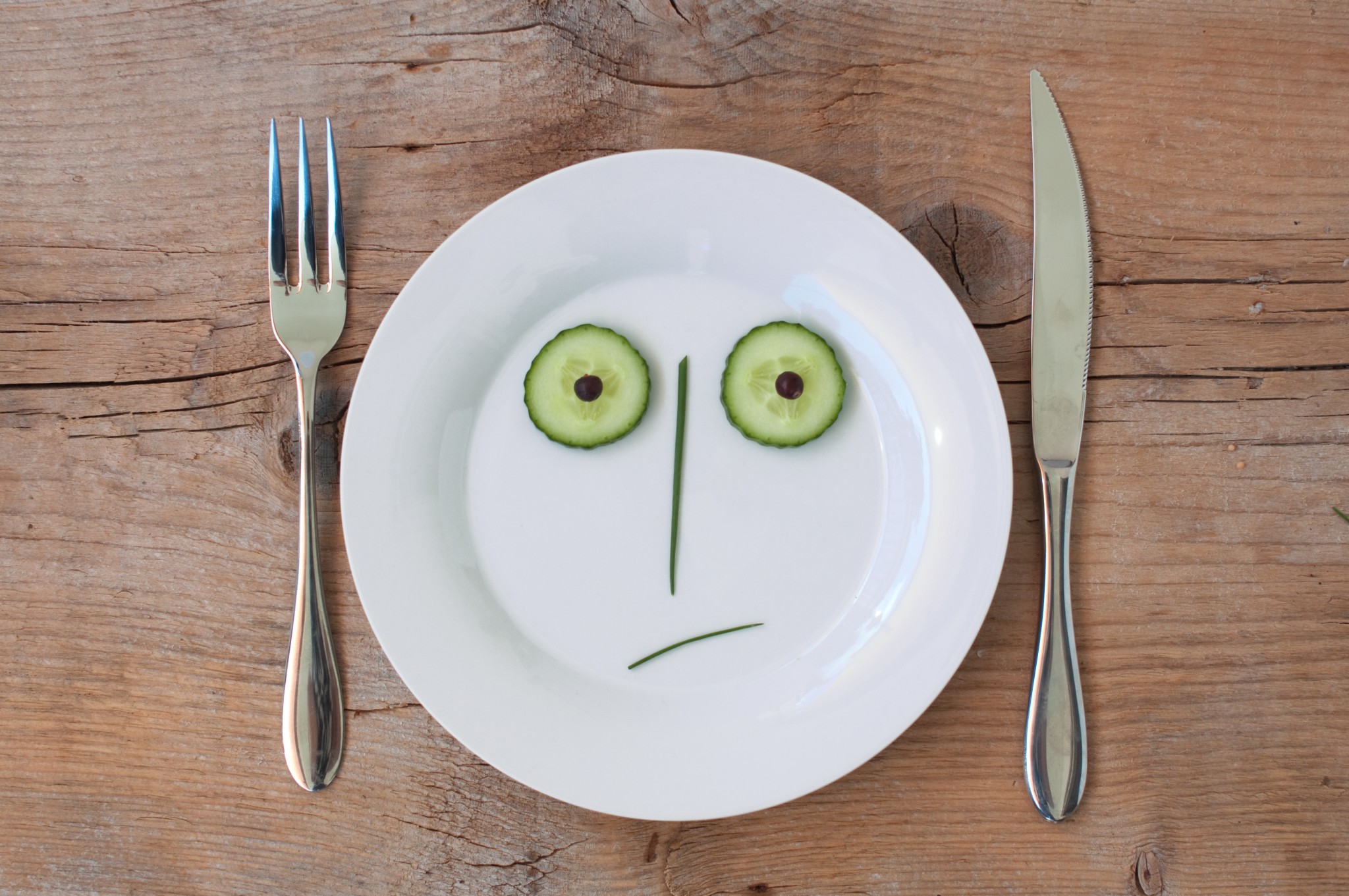A little more than a month ago, I expanded Team Greenie Pig to four and set out on a month-long challenge to eliminate animal products from our diets. Would we discover an entirely new way of eating? Experience a miraculous increase in vitality? Or crash and burn spectacularly over an irresistible salumi plate? And would any of us end up converting wholly to veganism?
One thing we all agreed on: We learned a lot. Now it’s your turn: I encourage — nay, dare — you to try the vegan experiment yourself. It’s challenging, surprising, and utterly worthwhile. But before you do, here are some of those lessons we learned along the way.
It’s hard.
Surprise, surprise: Departing from the eating and cooking habits you’ve developed over decades — particularly if you developed them in contemporary, fast-food-lovin’, steak-and-potatoes-havin’, pizza-partyin’ America — is challenging. I normally eat meat sparingly and front-load my plate with veggies anyway, and still I found the strict vegan thing to be hard.
It’s the little things: I missed butter and cheese (way more than meat). A bunch of my favorite whole-grain products were blacklisted for their honey content. I struggled with suddenly becoming the “difficult” guest at dinner parties and evenings out. Convenience foods got a whole lot less convenient. And eating well requires research: “The real start-up cost to veganism is a massive increase in the amount of time it takes to evaluate, plan, and execute great food,” notes my fellow vegan-for-a-month, Matt.
I’m sure this gets easier with practice. But insisting that a paradigm shift in dietary habits isn’t hard is a real disservice to anyone who’s struggling to adjust to it.
But not that hard.
People generally reacted to our experiment in one of two ways. One, “Oh YAY! Being vegan is the best!” or two, “I could never be vegan.” As a former member of camp two, I can honestly say: Yes, you totally can. Sure, there are roadblocks. But the food can be sublime. And while I missed some taboo items, I didn’t miss them as much as I expected. More importantly, the requisite scrutiny of what you put in your belly is enlightening. Forcing yourself to think harder about what you’re eating and where it comes from is habit-forming. And that’s a very good thing.
Don’t do it all at once.
For the sake of this experiment, we quit animal products … precipitously. (Ha! You thought I was going to say “cold Tofurky,” didn’t you?) If you’re serious about veganism sticking, don’t do this. You need time to learn new recipes, stake out the best vegan restaurant options, spread the word so your friends won’t tempt you with pork burritos, and allow for the occasional indulgence (all the better if it’s a local, organic, and humane one). Dip a toe, maybe wade in and splash around a bit before you do that cannonball.
Vegan does not necessarily = healthy.
Fries, fake fried chicken, Oreos, straight-up shots of coconut oil: all vegan. If you’re looking to eliminate saturated fat or processed foods, veganism isn’t foolproof. But I don’t point this out as a deterrent. On the contrary, it’s wonderful. Everyone needs a treat now and then — perhaps never more than when the majority of your diet consists of squeaky-clean, nutrient-dense, health-halo components. Rest easy: You can eat vegan and still chow down on fatty junk food. May I suggest coconut non-dairy frozen dessert? It’ll keep you sane.
The food can be delicious.
All four of us already appreciated a good crisped chickpea salad or the simple union of black beans and guacamole. But being forced to seek out still more magical combinations was one of our favorite parts of this quest. Without it, I’m not sure we would have hunted down this pizza. Or these grits with “creamed” cashews and mustard greens. Or this mushroom soup …
You’d better like cooking.
Going out to eat is fraught with peril: lack of inspiring options at your typical restaurant, saturation with the limited number of places that do have options (Thai is great, but it’s not every-night great), and the smell of non-vegan foods promiscuously wafting about. Plus, you might have to get demanding: Ted’s low point of the whole endeavor was “masquerading as an actual vegan and bending a restaurant to my iron will. I wanted to bury my face in sunchoke.”
Easier and better is to cook at home most of the time, and host those dinner parties yourself.
Don’t expect any miracles.
Perhaps you need more than a month to fully reap the purported benefits of the vegan diet — amazing skin, hair, energy levels, etc. But none of us experienced noticeable improvements in any of the above. “Have you noticed any changes?” my friend, Heather, asked over Lebanese food during week four. When I said no, she took another bite of her beef kebab with visible relief.
There is one side effect you should be aware of (reported by two of the four of us). Let me put it this way: Say you’re a zookeeper, and you’re accustomed to cleaning the antelope cage. You’ve just been promoted to elephant duty, my friend.
The perfect is the enemy of the good.
Yeah, yeah, great lessons. What you really want to know is: Are we vegans now or what?
No.
Before you can say, “I told you so,” dear readers, let’s unpack this. Four out of four of us declined to continue the experiment when the 31 days were up. “The relevant issues for me are sustainability, nutrition, and the enjoyment of food,” Matt mused. “Although veganism has useful things to say about all of them, completely eradicating animal products seems an overreaction to a complex problem.” Laura agreed: “Eggs from your neighbor’s chicken seem far more animal-conscious and environmentally friendly than tofu made from vast fields of soybeans and processed who knows where.”
But: Four out of four of us also realized we wanted to raise the bar for the animal products we did eat. “I pay attention to foods in a way I never have before,” Ted reported. Matt and Laura dedicated themselves to finding local meats and cheeses. We all understand now that we can survive perfectly well without animal products — so why wouldn’t we consume less of them, and make sure the ones we do eat come from ethical sources?
So we all went off the vegan wagon. But on night 33, Laura texted me: “We totally just ate a vegan dinner anyway.” Last night, Ted and I had roasted veggies over lentils. “Oh, hey, this is vegan,” we said, halfway through preparing it. I’d picked the recipe simply because it sounded good — and I’ve only gotten to a fraction of the vegan meals I’ve earmarked to try so far. We’re keeping up the vegan dinner parties; hey, they’re fun.
In the end, it turned out just as I expected: I’m not going to be a vegan, but I will be more vegan than I was before. The problem with all-or-nothing thinking — especially in a country where 98 percent of people are not vegan — is that if you demand all vegan all the time, you’ll probably just get nothing. During the course of this experiment, I heard from and spoke with many more people who are “mostly vegan” (i.e., cop to eating cheese once in a while, or eat vegan at home but not necessarily with friends) than who are “really vegan.”
So my challenge to you: Be more vegan than you are. Even if you don’t want to take me up on the month-long experiment, maybe you can eat a vegan dinner three times a week. Or do like New York Times food writer Mark Bittman and be vegan until 6 p.m. every day. Or hell, keep eating meat, but make it ethical meat. Whatever you’re doing, try doing it a little better. Who knows where it’ll lead you?




